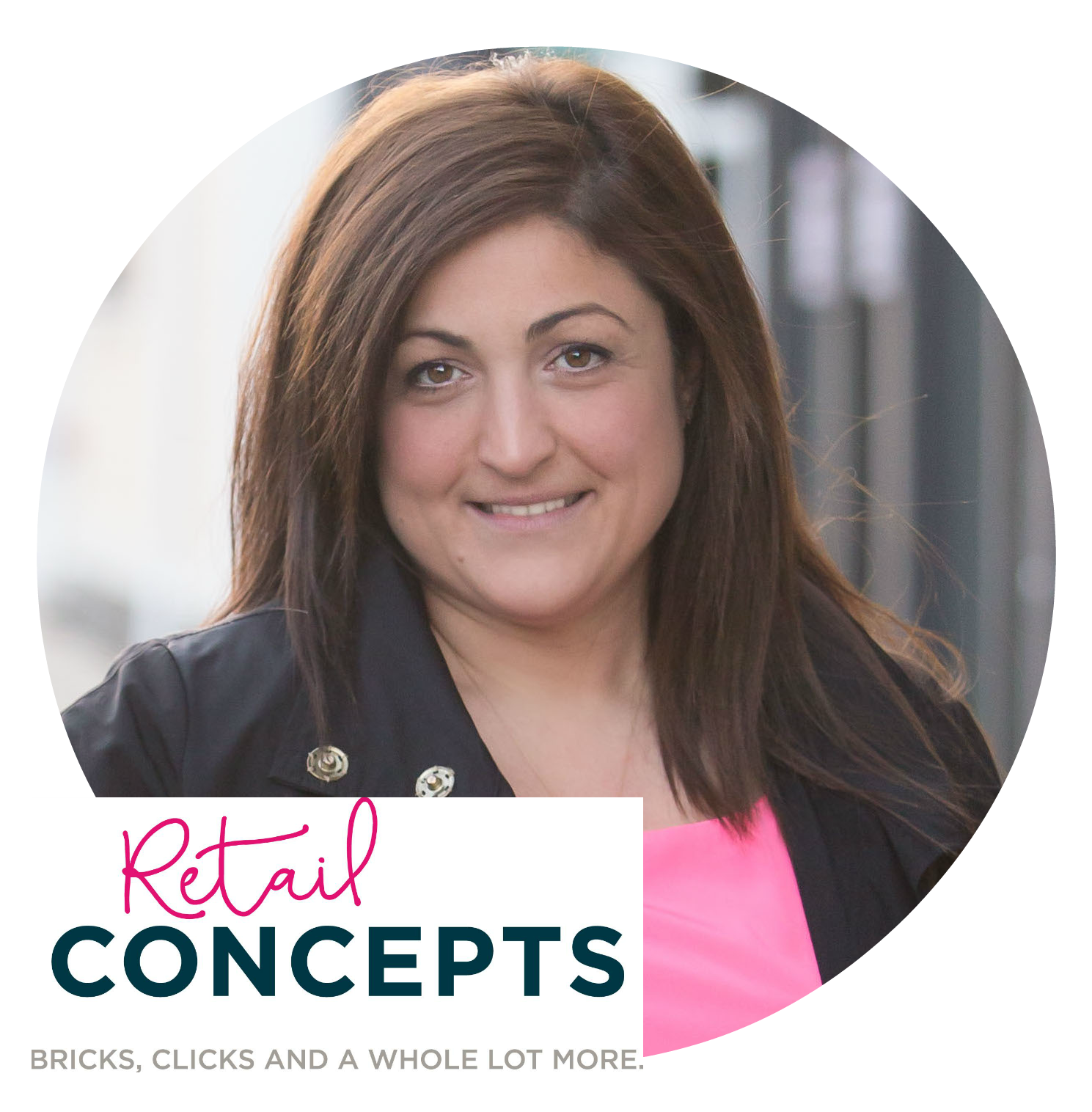Retail Trends and Predictions for 2017


It’s that time of year again–holiday sales are in full force, U.S. customers are emerging from a post-election sales halt, and Black Friday and Cyber Monday sales are on the horizon.
At CPC Strategy, we’ve been talking about Q4 strategy for months. Now that we’re in the middle of it, we’re already asking a bigger question:
What will 2017 retail trends look like?
We consulted six retail experts to get their insights and predictions for the year ahead.
Some of these experts have worked on marketing strategies with brands like Chanel, Macy’s, Marks & Spencer, and Sainsburys; others have 15 years of experience; one was named a Future 100 and Startup 100 entrepreneur.
Even more importantly, all of them have key information that should help you get ahead of the retail curve in 2017.
Read on to find out what’s in store.

Devin Fitzpatrick–Founder and CEO of CDF Consulting
Devin is an ecommerce industry leader with a Columbia University and FIT education and an entrepreneurial spirit. Throughout her career, Devin has defined and implemented the digital strategy of some of the top global luxury brands in the world. Having worked in-house at brands such as CHANEL, Shiseido, Donna Morgan and J.McLaughlin, Devin launched CDF Consulting when she recognized the need that many smaller fashion and luxury brands had for top tier digital strategy assistance.

Chris Hammond–Management Consultant at The Parker Avery Group
Chris has 10 years of combined industry and consulting experience in the retail, restaurant and consumer goods industries. He has worked with a broad array of clients across the retail landscape and focuses on delivering strategy, process and technology solutions. Chris has authored, edited and contributed to industry white papers, studies at The Parker Avery Group, and blogs.

Eliza Fisher–Marketing Strategist and Editor at Social Annex, Inc.
Eliza is the marketing strategist and editor for Social Annex, the only software company offering a complete platform of customer loyalty and advocate marketing solutions. Her work has been published in Marketplace, Loyalty 360, and CMS wire, among other outlets, and she’s advised companies in the Internet Retailer Top 500 on matters of content strategy, copywriting, and customer engagement.

Paul Thomas–Luxury Retail Consultant at Retail Remedy
Paul is a successful Retail Sales Director who cut his teeth at Harrods of Knightsbridge and Sainsbury’s – where he covered Luxury and General Retail. He’s an expert at leading and developing teams in the areas of Sales Growth, Customer Experience and Operational Retail Remedy Standards, and always meets profit targets.

Ani Collum–Retail Strategist and Startup Advisor
Ani is a retail industry expert with 15+ years of experience working with start-ups to large retail players across new concept incubation, branding, marketing, financial analysis, inventory management, merchandising and operations. She’s worked with TJX, Tommy Hilfiger, Macy’s, J.Jill, and other lifestyle, luxury, department store and off-price segments, and is an industry speaker and frequent press contributor for retail related trends and stories.
 Cate Trotter–Head of Trends at Insider Trends
Cate Trotter–Head of Trends at Insider Trends
Cate is the Founder and Head of Trends at Insider Trends, a leading London-based retail futures agency. As Head of Trends, Cate has helped world leading brands such as Chanel, Galeries Lafayette, Marks & Spencer, Metro Group, Samsung, House of Fraser, Lego and EE innovate and create world-leading retail ecosystems. Cate’s experience of setting up two successful businesses in her 20s has led to her being named a Future 100 and Startup 100 entrepreneur.
Everything for ecommerce and digital marketing needs to be executed with mobile at the forefront.
The growing importance of mobile marketing and apps is shown by these Smart Insights Mobile Marketing Trends statistics:
Mobile UI and UX design and upgrades need to be completed before desktop. Mobile traffic is doubling every year, and now, more than ever, consumers want a one-touch checkout. Make your mobile experience seamless and easy to navigate and purchase for the customer and your conversions will increase instantly.
It is much more difficult in 2016 to grow and acquire loyal customers. To do so in 2017, we need to form partnerships with like brands or similar brand values within different industries.
We need to work together to excite the customer on why they should shop with our brand and retain them. Strategic partnerships like that one can be a highly effective way to build a business, boost brand awareness, and break into new markets.
For a partnership to work, the value perceptions, target audiences, prices, and promotion channels need to match.
This year, it was content. Now, we need to focus on the efforts we put in place this year and capitalize off of the data and consumer behavior we have seen this year and will see in Q4.
Marketing plans and campaigns should always start with understanding customers’ omnichannel needs, wants and behavior. The key to success in 2017 is being to acquire customers who purchase at least 2-4x a year with your brand. You can do this by analyzing multiple layers of customers data in 2016.
In 2016, I would expect retailers to fully review and internalize the value proposition of mobile, and realize that even though the phone will not be a large driver of sales as a platform, it will be one of the largest drivers of customer purchase behavior the market has ever seen. “Mobile-Influenced” will become an essential term for any brand.
“Showrooming will spell the end for bricks-and-mortar.”
This was an all-to-common refrain just a few years ago, yet while ecommerce’s sizable entry into the marketplace has exposed a variety of limitations and challenges for in-store operators, it has been far from a doomsday scenario.
This is due to several factors–one is that retailers are slowly becoming savvy at capitalizing on demand and fulfillment opportunities provided by having vast networks of stores, essentially turning these locations into distribution and fulfillment networks.
The second factor is the understanding that personalized service, touch, feel, and uniqueness are vital parts of the customer shopping experience.
These learnings and the process of educating customers that there are quick and inexpensive or free fulfillment options beyond Amazon Prime have also opened the door for retailers to invest in refreshing the in-store experience, leveraging physical stores and well-trained, empowered store associates to provide differentiated and desirable experiences.
In the past, a customer may have been identified as a high value/spending customer, so they would get 12 communications a year with coupons for their next store visit (flat percent-offs on everything). Their store purchases will be tracked, and the coupon redemption rate would be the measure of success.
In 2017 and beyond, we will continue to see marketing become more personalized, focused on individual purchase behavior, and tracked by increasingly robust loyalty programs. These marketing messages will follow customers across channels, capture and promote wider ranges of engagement, and not be limited by more traditional methods.
Retailers will also need to be aware of and responsive to privacy concerns that arise from this type of tracking and analytics. While many consumers, especially younger generations, will approve of and even expect optimized offers across channels, the line from “cool and appreciated” to “creepy and intrusive” can be quickly breached.
To combat this, retailers will need to effectively communicate the opportunities and capabilities built into their programs and applications they are providing–as well as provide shoppers with the assurance that their private information is safe.
Retailers have gotten really accustomed to the idea, if not the actual implementation, of the omnichannel purchase process.
They let customers start shopping on one device and finish on another, or buy online and pick up in-store, and so on. 2017 is going to see omnichannel marketing, and specifically, advocate marketing, have its star turn.
This means that retailers will get a stronger grip on having shoppers start and complete omnichannel referrals, or submit digital product reviews regarding their in-store purchases.
They’ll need to be armed with quality technology, of course, but instead of just getting a good picture of which customers are sharing photos, referring friends, contributing content, and so on, on social or on your site or app, we’ll finally start to enable these sorts of actions in-store and get better visibility on them.
A clear narrative hasn’t really emerged yet around how retail marketers can make use of IoT devices. That’s partly because it’s such a large category with wide applications, and also because of its continuing growth.
However, I think that in 2017 we’re going to see more marketing teams with large enough budgets use connected devices for niche projects.
I’m imagining items like color matching tools used to sell cosmetics or home improvement supplies, less expensive promotional fitness trackers for athletic gear and exercise businesses, and so on.
We’ve just seen the debut of Snapchat’s spectacles, and while they’re gimmicky they also grab attention. Retailers are going to take note of that and get inspired.
Click to read: Are Snapchat Ads Worth the Investment?
With retailers like Amazon and Walmart continuing to dominate the retail landscape, mid-level retailers and manufacturers are continually looking for ways to differentiate themselves in sustainable ways. Obviously competing with the fulfillment network or prices is a huge challenge, so a lot of the work needs to be done in marketing.
One trend I’m already starting to see is for these sellers to invest in loyalty programs for their own sites. They’ve known for a while that loyalty programs provide attractive customer incentives to return, but I think that there’s a new realization regarding just how powerful a good loyalty database can be.
When you combine customer loyalty data with insights from your other marketing programs and from purchases, the possibilities for boosting acquisition, conversion, and retention really come alive.
We expect a high degree of direct marketing from luxury brands next year as they seek to grow the portion of online trade from 5% to 18% by 2020.
They will need to improve their platforms and their ability for customers to purchase via several channels, with the key one being mobile.The need is further amplified by the start of the “see-now-buy-now” movement. If customers are to buy direct from the catwalk, brands will have to drive their mobile commerce channel.
Burberry is one of the early adopters of this change, and also have some of the best technology to enable this. Expect more to follow over the next year as catwalk brands seek to engage with their audience faster and beat the fast fashion retailers to the sales.
With that in mind, it will be interesting to see how the fast fashion brands react to ‘see-now-buy-now”. Currently, they have approximately six months before the catwalk collections hit the shops to create their own versions.
But this time frame will be eroded in the future, and they will definitely want to sharpen their lead times. Logistically, the time frame will be limited if they are going to wait for the catwalk. Therefore, we expect brands to start their own catwalk campaigns, as Top Shop has.
With the UK’s decision to leave the EU, the weaker pound has already driven higher numbers of international visitors, and we see that continuing. Brands will be keen to take advantage of this and looking to capitalize on this opportunity to grow sales.
The use of technology to engage with customers in new and innovative ways will be a key part of future marketing strategies.
China continues to be a target for the UK and the luxury brands housed here, so with the price deflation due to currency rates, this will be a priority. We know China’s growth is slowing, but it is still growing and luxury is still aspirational particularly for the growing middle tier of Chinese.
The use of technology that customers use to explore the retailers offer will explode next year and some will be heralded as the future of retail, none of them will be and they will be adopted by a few innovators and early adopters yet it is unlikely they will reach the status of early majority in the next few years.
Apps on smartphones will be promising but are unlikely to produce returns in 2017. The only exception will be revenue earned from suppliers who have been asked to fund some of the development and execution.
While ecommerce continues to gain channel market share, offline retail still drives the majority of retail spend.
Ecommerce will still most likely grow at a faster rate, but what we’ll continue to see more of in 2017 is more retailers moving towards an integrated commerce model where the brand has multiple selling touchpoints for consumers to interact with.
For many currently pure-play ecommerce companies, this could mean bricks-and-mortar stores in the form of showrooms, pop-ups and possibly permanent locations.
Expanding offline presence–if done right–provides retailers with the opportunity to form deeper personal relationships with customers and help drive purchase behavior over the customer lifecycle.
Experiential retail provides the ability for brands to further engage customers through authentic experiences—whether they happen online or offline.
This has always been an important part of retail, but we are definitely going to see more of it in 2017 given the success integrating experience has had in retail to-date.
One offline example is Outdoor Voices using its stores to not just sell merchandise but also to reinforce the community elements of the brand by hosting running clubs and other active events that relate to the brand.
An online example would include a brand like Glossier who has had a ton of success featuring real people—including Glossier staff—using Glossier products in videos featured on its social channels. These types of experience-driven approaches will continue to evolve the retail landscape in the upcoming year.
Technology in retail has been a buzz word for years, but to date, we haven’t seen a lot of it in practice that truly enhances customer experiences.
More and more retailers are betting on startups to help create new dynamics in their stores and are making more efforts to connect with them through corporately spearheaded labs and incubators.
Technologies like interactive fitting rooms, self-checkout technology, and interactive signage and displays that provide customers with product attributes or reviews will be more prevalent across the industry in large and small retail stores.
Made-to-order, while not a new concept, is one that more and more retailers are paying attention to. This is partially due to the cash flow benefits the model provides by minimizing investment in inventory.
Additionally, socially conscious brands (and their consumers) are being drawn to the model as it reduces the waste of producing inventory that may never be purchased or worn.
Over the past few years, we have seen new brands such as Iconery, Ellie Kai, and Indochino embrace this model, and a new batch of retailers are sure to crop up in the upcoming year.
If you live in a major city, you will know someone who will have interacted with a Google Physical Web beacon by the end of 2017.
I’m excited to see how Google Physical Web develops–it’s a system that makes it easy for your phone to access a specific URL based on its location.
You don’t need an app to access the content, and it’s expected to be the most accessible location-based content solution. Users can access information when they enter stores, they can request that their click and collect order gets prepared, they can buy from their phone in a few clicks after being inspired by a billboard.
You will also know someone who has bought something through a connected home device, like an Amazon Dash button or a device that reorders its own consumables.
It’s a safe bet to say it’ll double because (sadly) only a handful of retailers are offering this currently! There are a few reasons why this will happen.
Customers have more certainty and a better experience when they can see what is and isn’t in stock nearby. This influences customers’ decision over who to buy from, so systems like these pay for themselves.
Customer expectations are being set by the retailers that do offer this service–and the retailers that don’t offer it will start to lose out.
There are also plug-and-play systems that make it easy for stores to make their inventory searchable from smartphones. NearSt is one of these. The area it serves and the number of categories it caters to will grow rapidly in 2017.
Retailers will be more likely to launch their own retail tech incubator programmes, taking advantage of agile innovation processes, adapting KPIs to encourage experimentation and learning as much as success, or using open innovation methods for at least one project.
The rate of change within the industry is speeding up, and newer processes like these will help retailers keep up and stay afloat as some retailers fall by the wayside.
There are lots of other interesting spaces to watch – we’re excited to see what happens with exponential technologies in retail, P2P delivery, genuinely smart personalisation, brand communities and personalised billboards, to name a few. We’re looking forward to 2017!
At CPC Strategy, we’re also looking forward to 2017. From beacons to better marketing tactics, we’re excited to see how the retail industry adapts to today’s connected consumer.
What are you looking forward to in 2017? Do you foresee any challenges for the retail industry in the near future? Share your thoughts in the comments.
